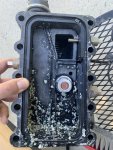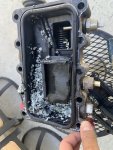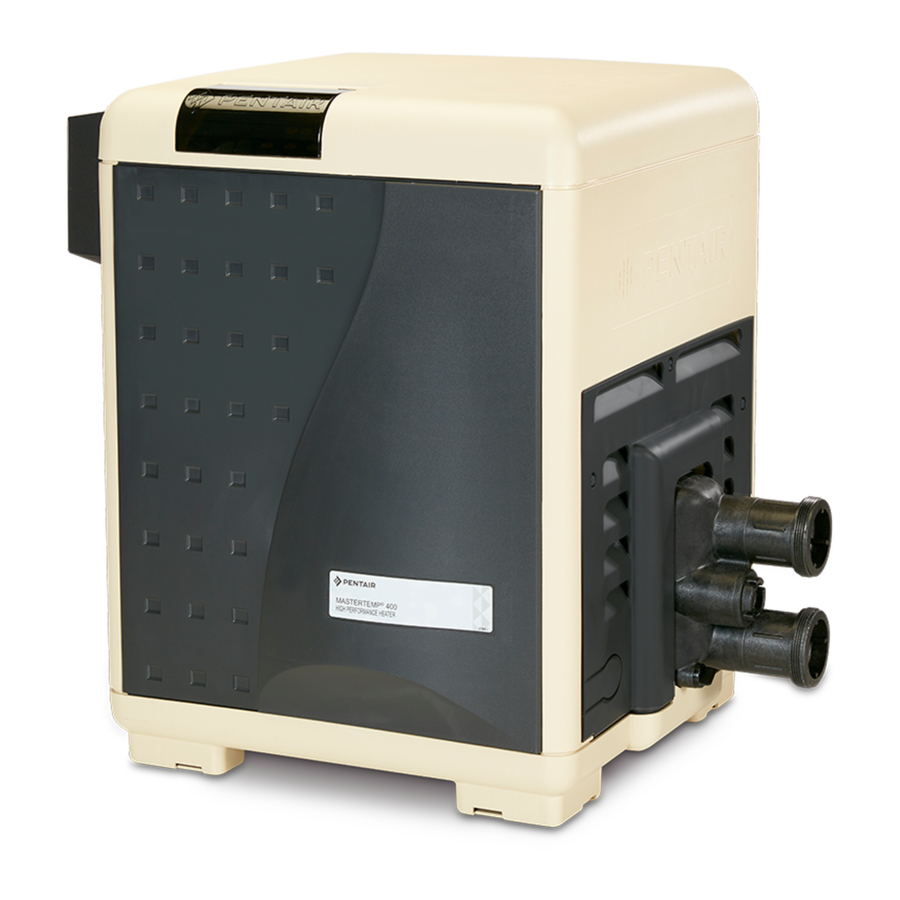Hello all. Newbie here hoping to find some assistance.
I have a Pentair Mastertemp 250 pool heater. When the heater is turned on, after a variable amount of time the service heater light comes on. It is almost always within the first 10 minutes of operation. Once the service heater light comes on the system freezes and has to be shut off from the timer or breaker. Once turned back on the cycle continues. This was initially accompanied by a loud rattling sound coming from the heater. I would also notice that the temperature reading would fluctuate during the rattling from 75 to 120s rapidly then slowly come back down to 75. The blower would stay on, but the heat would not. On the back of the LED panel the AGS LED5 was illuminated. My first thought was that there was a foreign body in there or something like a broken backflow valve that was causing the rattling and not allowing proper heating. Having little to no knowledge about pool heaters, and without much help from my pool guy, I turned to trusty Google and YouTube to take apart the heater to troubleshoot.
I checked the thermoregulator which was still functioning, but changed it anyway. I took apart the manifold and found a lot of plastic/ceramic looking debris within in. I have attached pictures to this post. I have no clue what that debris was or where it came from. I cleaned it out hoping it would solve all of my problems. I checked the backflow valve which appeared intact. Everything else also appeared OK including the heating coils and blower. With fingers crossed I reconnected everything and turned the heater back on. The rattling noise was gone, as was the fluctuating readings on the display. However, still within 10 minutes the service heater light comes on and freezes up the system.
Sorry for the long post, but I wanted to be sure I include as much info as possible. I am thankful I found this site and hope someone will be able to help. My pool guy is out of answers and I'd rather exhaust all my options before buying a new heater during these times.
I have a Pentair Mastertemp 250 pool heater. When the heater is turned on, after a variable amount of time the service heater light comes on. It is almost always within the first 10 minutes of operation. Once the service heater light comes on the system freezes and has to be shut off from the timer or breaker. Once turned back on the cycle continues. This was initially accompanied by a loud rattling sound coming from the heater. I would also notice that the temperature reading would fluctuate during the rattling from 75 to 120s rapidly then slowly come back down to 75. The blower would stay on, but the heat would not. On the back of the LED panel the AGS LED5 was illuminated. My first thought was that there was a foreign body in there or something like a broken backflow valve that was causing the rattling and not allowing proper heating. Having little to no knowledge about pool heaters, and without much help from my pool guy, I turned to trusty Google and YouTube to take apart the heater to troubleshoot.
I checked the thermoregulator which was still functioning, but changed it anyway. I took apart the manifold and found a lot of plastic/ceramic looking debris within in. I have attached pictures to this post. I have no clue what that debris was or where it came from. I cleaned it out hoping it would solve all of my problems. I checked the backflow valve which appeared intact. Everything else also appeared OK including the heating coils and blower. With fingers crossed I reconnected everything and turned the heater back on. The rattling noise was gone, as was the fluctuating readings on the display. However, still within 10 minutes the service heater light comes on and freezes up the system.
Sorry for the long post, but I wanted to be sure I include as much info as possible. I am thankful I found this site and hope someone will be able to help. My pool guy is out of answers and I'd rather exhaust all my options before buying a new heater during these times.





 Have a look around at our Pool School and some of the new videos that have been posted in the TFP TV section. You’ll see that TFP is a big advocate of self-reliance, self-testing and managing your pool care yourself. Few of us use expensive pool services and most of never spend more than a few hundred dollars per season on our pools (water, chemicals, electricity ,etc). You can save yourself a lot of money by learning to do it yourself. If you can take the header and manifold off your own pool heater, then you can certainly manage the pool yourself.
Have a look around at our Pool School and some of the new videos that have been posted in the TFP TV section. You’ll see that TFP is a big advocate of self-reliance, self-testing and managing your pool care yourself. Few of us use expensive pool services and most of never spend more than a few hundred dollars per season on our pools (water, chemicals, electricity ,etc). You can save yourself a lot of money by learning to do it yourself. If you can take the header and manifold off your own pool heater, then you can certainly manage the pool yourself.